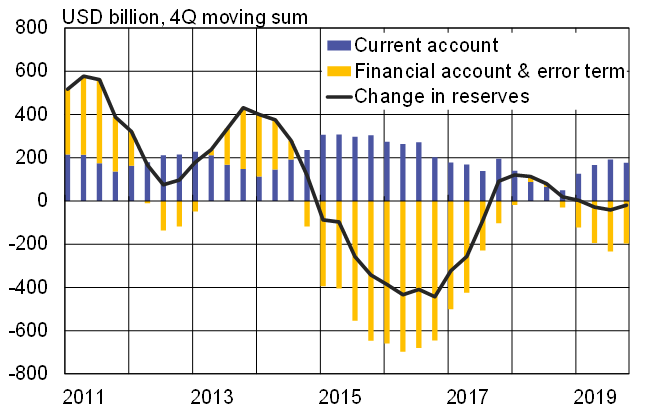BOFIT Weekly Review 8/2020
China’s 4Q19 current account surplus shows modest shrinkage
Balance-of-payments data released by the State Administration of Foreign Exchange (SAFE) show that China’s current account surplus fell to 40 billion dollars in the October-December period, a level lower than in any of the previous three quarters. Despite the smaller fourth-quarter surplus, China’s overall 2019 current account surplus reached 178 billion dollars, well above the 2018 surplus (49 billion dollars). The ratio of current account surplus to GDP last year was 1.2 %, up from 0.4 % in 2018.
SAFE will later release detailed information on capital movements, but the current balance-of-payments information already shows that foreign direct investment inflows to China declined last year to 157 billion dollars from 203 billion dollars in 2018. The outward FDI of Chinese firms to other countries amounted to 98 billion dollars, essentially unchanged from the previous year. For comparison, China’s commerce ministry reports that FDI inflows to China rose slightly last year to 138 billion dollars (the commerce ministry figures exclude financial sector investment, which has accounted for a few percent of total investment in recent years). Outbound FDI last year declined to 117 billion dollars from 143 billion dollars in 2018.
Using available balance-of-payments data, the net capital outflow from China last year was just under 200 billion dollars. The current account surplus largely compensated for net capital outflows, however, so changes in China’s foreign reserves were negligible. As of end-2019, China’s foreign currency and gold reserves amounted to 3.223 trillion dollars.
Main items in China’s balance-of–payments

Source: Macrobond and BOFIT.